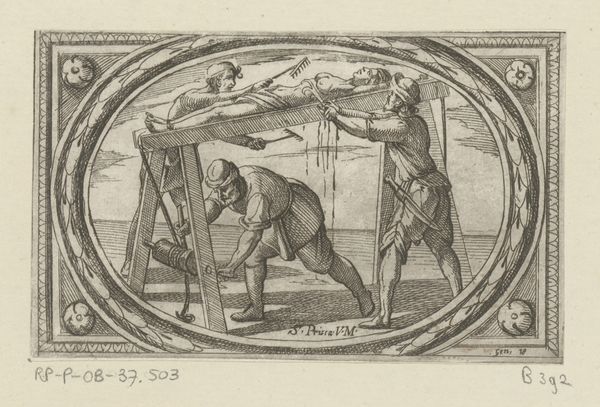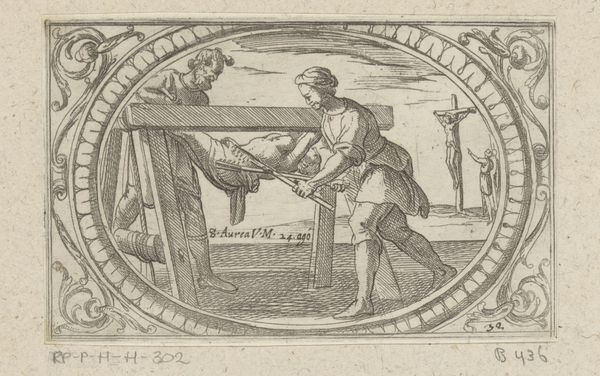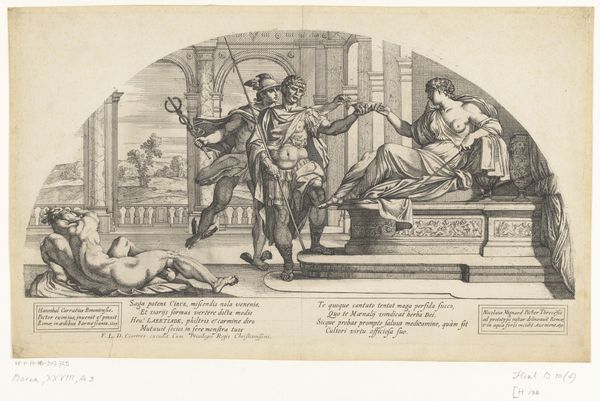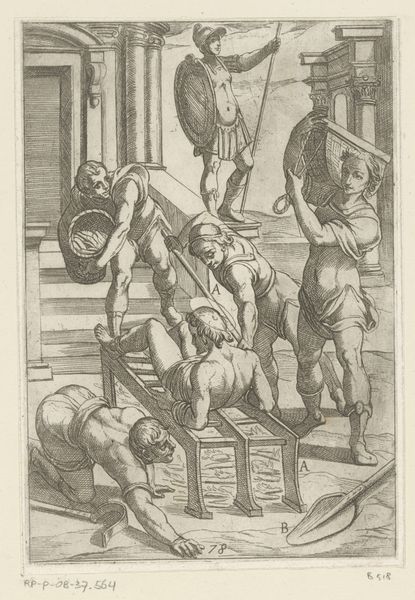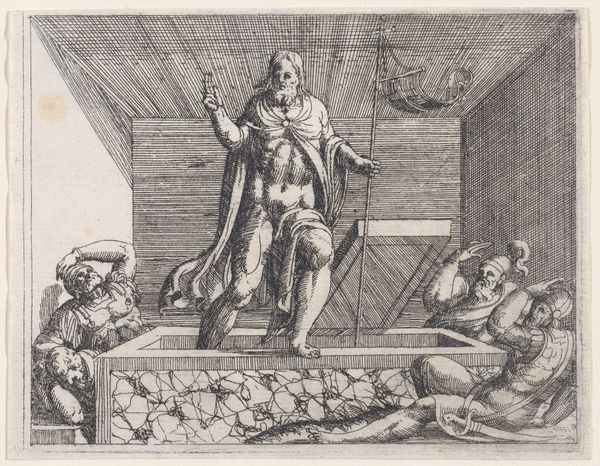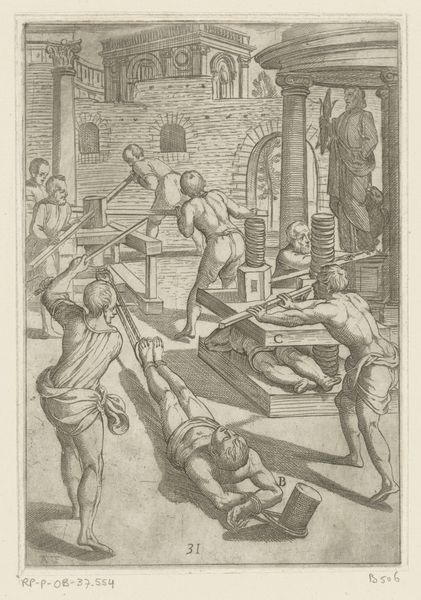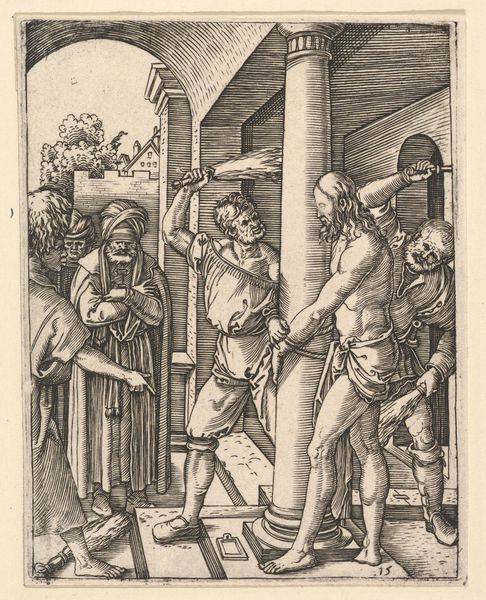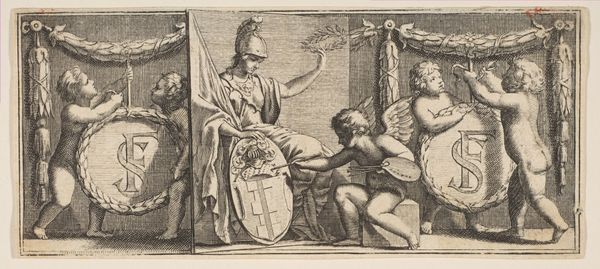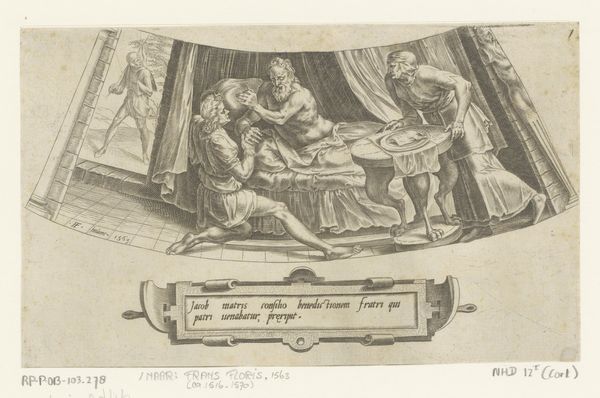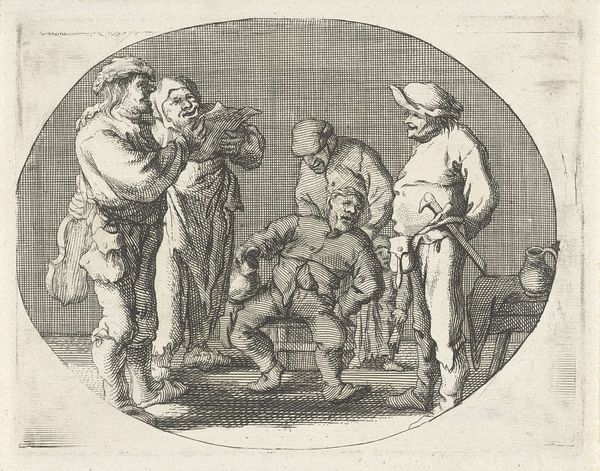
engraving
#
narrative-art
#
baroque
#
figuration
#
geometric
#
history-painting
#
nude
#
engraving
Dimensions: height 73 mm, width 114 mm
Copyright: Rijks Museum: Open Domain
Editor: Here we have an engraving titled "H. Palagia en H. Ripisma," created sometime between 1565 and 1630, attributed to Antonio Tempesta and housed in the Rijksmuseum. It depicts what looks like a torture scene. It's quite graphic. What is your take on it? Curator: It does jolt you, doesn't it? And what strikes me first, beyond the obvious gruesomeness, is the geometric dance the figures perform within that ornate frame. It's a visual paradox. Editor: A paradox? Curator: Exactly. Think of the Baroque era’s fascination with dramatic tension, life, death and theatrical presentation. Antonio Tempesta crams these gruesome tortures in this incredibly ornate surrounding, these geometric frames are beautiful and unsettling simultaneously. It sort of enhances the theatrical horror. It's like framing a scream, what do you make of that? Editor: That’s an interesting take – so it’s not just about the suffering, but how that suffering is being presented? Curator: Precisely. The figures themselves, almost theatrical in their exaggerated gestures, become actors on a stage. Now, what do you think the historical background may hint? Editor: Hmm, given the title references to "H. Palagia en H. Ripisma," maybe it's connected to some kind of martyr story. Curator: A fine guess! These are indeed saints who refused to renounce their faith and who suffered unspeakable tortures. Tempesta captured the essence of religious conflict. You see, art back then was often commissioned to depict the most harrowing images... Do you think that glorifies it, perhaps? Or does it warn the viewer? Editor: It's complex. Maybe a little bit of both, a reflection of its time. I guess art can really show the many levels within humanity itself, both gruesome and strangely beautiful, even from way back then. Curator: Well put.
Comments
No comments
Be the first to comment and join the conversation on the ultimate creative platform.
